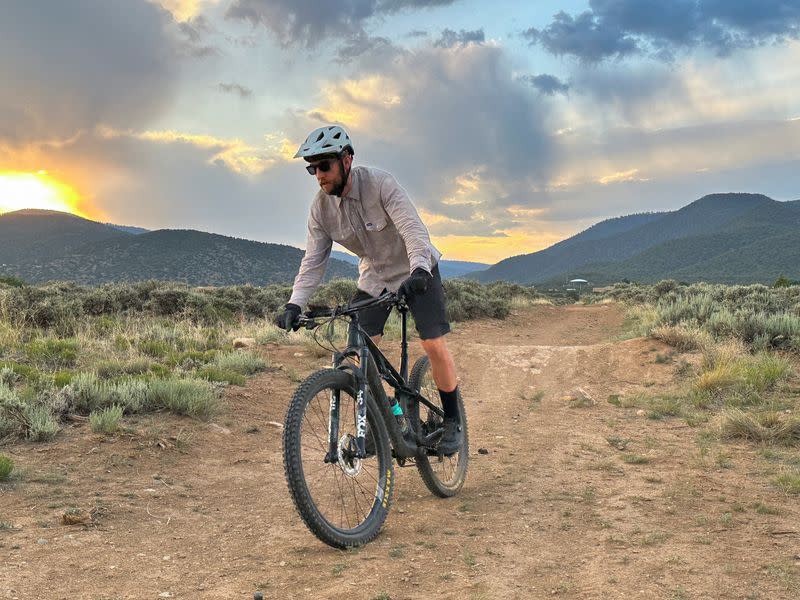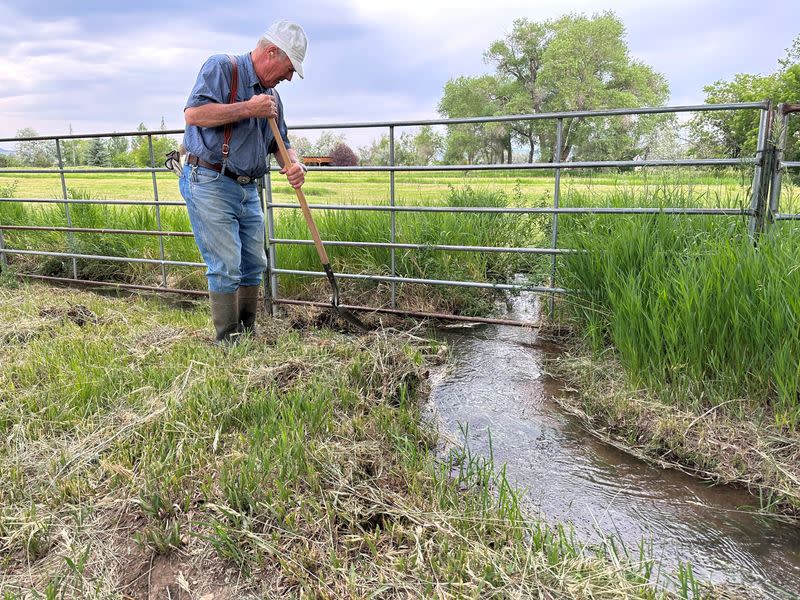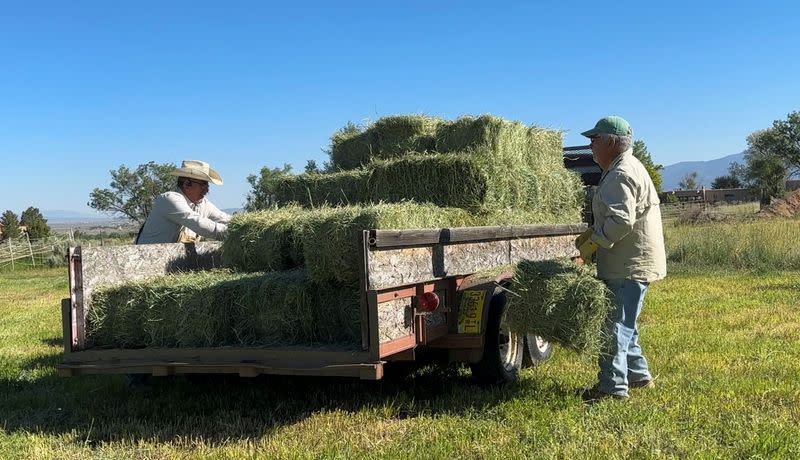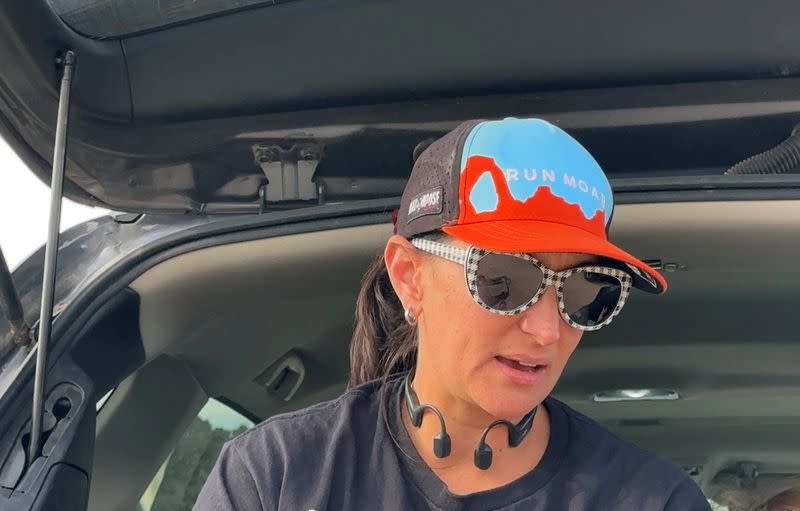New Mexico trail clash echoes culture war across US West
By Andrew Hay
TALPA, N.M. (Reuters) - Physiotherapist Spencer Bushnell lives less than a mile from farmer Carlos Arguello in Taos, New Mexico. But they are worlds apart on proposals to lace the foothills they love with up to 71 miles of mountain bike and hiking trails.
The two volunteered this year for a U.S. Forest Service working group to tackle surging trail demand and disappearing public access to hills studded with piñon and juniper trees after a post-pandemic, "Zoom boom" wave of new residents and second-home-owners.
That put the neighbors on the frontline of a culture war raging across the West as multi-generational families, conservationists and sometimes conservatives fight trail systems sought by incomers and recreationist locals. Opponents say the trails will harm water supply and wildlife, raise wildfire risk and stoke gentrification.
Two bike trail projects have been nixed in as many months on public land in Oregon and Colorado. The Taos process has split the mountain resort town of 6,600.
Bucking hay bales off his fields irrigated with foothills water, Arguello said he and other "locals" on the group last month dropped out of the process and withdrew their trail proposals - which had exclusion zones for elk areas and cultural heritage sites. The locals did not want to be seen as advocating any trails because of opposition from their community, he said. That left mainly proposals from pro-trails residents on the table.
"This is an assault on our watershed," said Arguello, 67, who fears an international mountain-bike destination is in the making, rather than trail proponents' vision of a phased plan to increase community livability over 15-20 years.
As the sun was rising over Taos Mountain, Bushnell biked near upmarket homes bordering the national forest where owners have built fences and gates in the last two years to block entrance. "This community is losing its public access to its own public lands," said Bushnell, 41, who grew up biking on trails built in Bend, Oregon as that city boomed.
Across the United States, Americans are moving to places with trees and trails, many working remotely.
Trail use on public land has as much as tripled since the start of the pandemic, according to Carl Colonius, planner for New Mexico's Outdoor Recreation Division, who pioneered a plan for managing demand on Taos' Talpa foothills.
Studies by the Headwaters Economics think tank say trails attract new residents and entrepreneurs, boosting public health and tax income, but the influx can lead to less affordable housing and force out long-time residents unless economies diversify.
In Taos' tourism-dependent county, known for its blend of Indigenous, Hispano and Anglo cultures, the average price of a condo increased 69 percent since 2019 to $327,000, according to Zillow. Under five percent of working households can afford the median home price in a county where the largest income bracket is households earning under $15,000 a year, studies have shown.
The group hardest hit has been Hispanos such as Arguello - the descendants of colonial settlers - whose share of the county population has fallen around 20 percentage points in the last two decades from over half to about a third, according to census data.
Darryl Maestas says newcomers show a sense of entitlement when they propose carving a network of trails where Puebloan Indians and members of a Catholic religious brotherhood have held ceremonies over the centuries.
"Either the other side doesn't get it, or they don't care and just want it all anyway," said Maestas, a farmer who returned to family land after three decades working from South Korea to Afghanistan as an aircraft mechanic for the U.S. military.
The imposing area was first taken from Native Americans by Hispanos, turned into common land by Spanish land grants, then occupied by the USFS in the late 1960s after being clear cut by a timber company.
Homemaker Emily Matheu moved to Taos from Oakland, California four years ago and has advocated for trails.
"I was told on the mamas group Taos doesn't need any more people here like me, people that move here from California and buy a condo and use the outdoors as their personal gym," said Matheu, 43, referring to a Facebook page for mothers.
USFS District Ranger Michael Lujan said he would continue community engagement on the foothills over user conflicts and forest damage on their 43 miles of informal trails. (This story has been corrected to change the title of Carl Colonius to 'planner,' from 'head,' in paragraph 10)
(Reporting By Andrew Hay; Editing by Donna Bryson and Alistair Bell)




